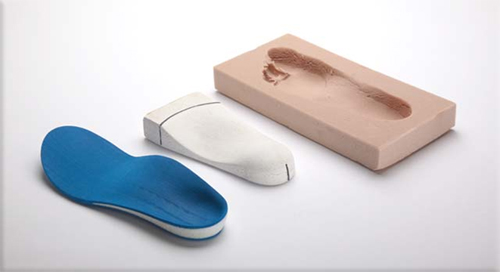Custom Boot Fittings Explained Loveland CO
Custom Boot Fittings Explained Loveland CO
Blog Article
Diverse Ski Boot Fitting Approaches Loveland CO
Choosing the right ski boot can significantly affect your snowboarding expertise, impacting each comfort and performance. Understanding the essential parts involved in making this choice is important for skiers of all levels, from beginners to seasoned consultants. The proper ski boot enhances management over your skis, allowing for better maneuverability on varied terrains.
One of the first considerations in deciding on a ski boot is the fit. Ski boots ought to fit snugly, but not uncomfortably tight. It’s important to try on numerous fashions and types, as each has its personal distinctive shape and sizing. A good fit will minimize movement throughout the boot, reducing the possibility of blisters and making certain that your power is transmitted efficiently to your skis.
How Tight Should New Ski Boots Be? Superior CO
Keep in mind that the majority ski boots come in several widths. The length of the boot is only one component of fit; the width will create a extra customized expertise. Boots are often categorized as narrow, medium, or wide, catering to totally different foot shapes. Your foot shape will largely dictate which width is best suited for you, impacting how comfy you're feeling during your snowboarding classes.
Next, the flex index have to be taken under consideration while choosing the right ski boot. Flex refers to how stiff or soft a boot is, with stiffer boots offering extra management and response. On the other hand, softer boots are more forgiving and simpler for novices to manage. Advanced skiers might favor stiffer models for optimum performance, whereas these new to the sport may discover softer options more inexpensive and comfortable.
The supposed ski fashion additionally plays an important position in your selection - Boot Fitting Resources for Skiers Loveland CO. Are you planning on skiing totally on groomed trails, or do you aspire to enterprise into backcountry skiing? Freestyle skiers typically choose softer boots, allowing for flexibility throughout jumps and tips. Alpine skiers may go for stiffer models that promote stability and responsiveness on hard-packed snow or icy situations
Boot Fitting and Repair Services Brighton CO
Another essential aspect is the boot's thermal insulation and how it retains your ft warm throughout prolonged exposure to chilly. Insulation materials range considerably, and some boots come with added expertise for heat retention. If you’re skiing in frigid situations, choosing a boot equipped for heat can drastically enhance your enjoyment on the slopes.
When assessing the liners of the ski boot, it is sensible to understand that this part can drastically change the fit and feel of your boot. Many modern ski boots include heat-moldable liners that conform to the shape of your foot over time. This customization can result in enhanced comfort and improved performance, as the liner supplies better help for your foot and ankle.

Buckle techniques are another factor to not overlook whereas choosing ski boots. The number of buckles impacts how securely the boot fits and the way easily you'll find a way to take it on and off. Boots with more buckles present a more adjustable fit and higher security. However, these with simpler techniques may be simpler for beginners to handle. Consider which aspects matter most to you primarily based on personal choice and experience degree.
Master Boot Fitting Techniques Erie CO
Selecting the proper ski boot size can additionally be sophisticated by differences in manufacturers. Sizes can vary, so it’s advisable to refer to size charts particular to every model you try on. Understanding your foot's measurements can guide you towards a extra fitting selection. This data can help you keep away from choosing a boot that is either too large or too small, each of which might detract out of your snowboarding expertise.
It’s essential to examine for extra features that some boots provide, such as walk modes or interchangeable soles. Walk modes enable for easier movement when you’re not in your skis, a great boon for people who like to hike or transfer across the lodge. Interchangeable soles can make the boot extra versatile, allowing it to adapt to several types of snowboarding or even strolling.
Try to hunt the guidance of skilled retail professionals when navigating the plethora of choices available. They can provide insights and suggestions primarily based on your skiing type, ability stage, and personal preferences. Their expertise will assist filter the appropriate boots that match your needs, guiding you through the nuances of fit and performance.
Bootfitting 101: Sizing Overview Longmont CO
In conclusion, the search for the right ski boot combines various essential components that require cautious consideration. Fit, flex, style, insulation, liners, buckles, measurement variations, and extra options all play a job in your choice. Spending time to research and examine out completely different models can make a substantial distinction in each performance and luxury, guaranteeing a extra gratifying day on the slopes. Prioritizing these factors and looking for professional recommendation will equip you with the mandatory instruments to make an knowledgeable alternative, resulting in improved snowboarding experiences for years to come back.
- Assess your skill level; beginner skiers typically need softer flex boots, while advanced skiers benefit from stiffer options for better control.
- Prioritize fit over brand; a well-fitting boot is crucial for comfort and performance, regardless of the manufacturer.
- Consider the boot’s last width, as it influences the volume of your foot; a narrow last enhances precision for narrow feet, whereas a large final supplies comfort for broader toes.
- Pay consideration to flex index rankings; every boot has a novel flex rating that matches your snowboarding type and physical attributes, affecting responsiveness and comfort.
- Explore custom insoles; they can significantly improve comfort and prevent issues corresponding to blisters and chilly toes by offering better arch support and weight distribution.
- Test boots in-store with appropriate ski socks; make sure the fit is cosy however not painfully tight, allowing for slight wiggle room and proper circulation.
- Look for heat-moldable liners; these could be custom-made to the shape of your foot for enhanced comfort, particularly when you expertise any pressure points.
- Consider the type of skiing you intend to do, whether or not it's alpine, backcountry, or freestyle, as each requires particular boot characteristics for optimal performance.
- Check for buckling techniques and options like energy straps; a great closure can improve fit, cut back motion, and enhance overall snowboarding effectivity.
- Don’t overlook about liner materials; completely different supplies provide various ranges of warmth, moisture-wicking, and cushioning, directly impacting your snowboarding expertise.undefinedWhat size ski boot ought to I choose?
Choosing the best size ski boot is essential for comfort and performance. Measure your foot length in centimeters and consult a ski boot size chart, usually a half-size smaller than your regular shoe size. Always strive boots on with the right ski socks for an correct fit.
How do I know if the ski boot is merely too tight or too loose?
How-To Guide for Ski Boot Fitting Firestone CO
A well-fitted ski boot should really feel comfortable but not painfully tight. Your toes should just contact the front of the boot when standing upright. When you bend your knees ahead, your toes should pull barely away from the front. A loose boot can result in poor control and blisters.
What is the distinction between gentle and stiff ski boots?
Choosing the Right Ski Boot Fit Dacono CO
Soft ski boots offer extra flexibility and comfort, making them appropriate for newbies or informal skiers - Common Questions About Boot Fitting Dacono CO. Stiff boots provide higher responsiveness and management for experienced skiers on difficult terrain. It's essential to choose based in your skill degree and snowboarding fashion
Should I think about boot width when choosing ski boots?
Yes, boot width, also referred to as "final," is important for comfort. Ski boots come in several widths—narrow, medium, and wide. Measure the width of your foot and evaluate every model's fit to make sure comfort and cut back pressure points while snowboarding.
What sort of ski boot is finest for my skiing style?
Is Bootfitting Really Necessary? Broomfield CO
Consider your snowboarding style: when you plan to ride groomed trails, an all-mountain boot is good. Backcountry skiers should go for lighter, more versatile choices. Freestyle skiers benefit from delicate boots for greater maneuverability. Match the boot type to your snowboarding desire for optimal performance.

How necessary is custom fitting for ski boots?
Best Ski Boot Fitting Practices Louisville CO
Custom fitting can considerably enhance comfort and performance. Professional boot fitters can adjust your boots to your foot shape, addressing particular pressure points and ensuring a greater fit. While not essential, it’s useful, particularly for many who ski frequently or have foot issues.

Is it worth spending extra on higher-end ski boots?
Higher-end ski boots typically feature superior materials and expertise, offering larger comfort, performance, and durability. If you ski often, investing in a prime quality pair can enhance your expertise and help you develop better abilities. Consider your skiing frequency and magnificence when deciding.
Boot Fitting 101 Essentials Wheat Ridge CO
What features ought to I look for in a ski boot?
Look for features corresponding to heat-moldable liners for customized comfort, adjustable buckles for a greater fit, and waterproof materials to keep your toes dry. Flex rating, insulation, and weight are also crucial components that should align along with your skiing needs and situations.
The Evolution of Boot Fitting Techniques Thornton CO
How do I maintain and store my ski boots?
Always dry your ski boots after every use to forestall moisture buildup, which may result in odors or deterioration. Store them in a cool, dry place away from direct sunlight. Regularly examine the liners, buckles, and soles for put on and tear to ensure they continue to be in good situation.
browse around these guys see Report this page